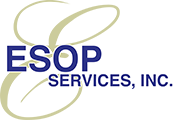by Ronald J. Gilbert, President, ESOP Services, Inc.
For owners of privately-held companies, tax-free liquidity may seem like a farfetched dream. While selling stock in a tax-free “stock-swap” is theoretically possible, it is the type of transaction that rarely occurs. Even when it does, the former owner or owners of the privately-held company now own stock in another corporation (usually public) and are at the mercies of the marketplace as to what the value of their new stock is or will be.
An alternative strategy that has now been employed by thousands of privately-held companies throughout the U.S. is a Controlled Employee Stock Ownership Plan, or CESOP. Under this strategy existing shareholders sell a portion of their stock to the Employee Stock Ownership Plan (ESOP), but still retain operating control of the corporation (thus the name CESOP).
There are almost an infinite number of variations of ESOPs for corporations. Not only do the rules differ depending on whether a company is private or public, an S Corporation or a C Corporation, but they even differ within those categories depending on whether the ESOP borrows money to buy stock (leveraged), or just makes annual contributions similar to a profit sharing plan (non-leveraged), whether or not employees vote their stock for the board of directors, or own enough shares in the ESOP to have control. This article will focus on the CESOP where employees do not have control, and do not vote for the board of directors.
CESOP
The owners of C corporation stock will sell the ESOP less than 50% of the stock that they own (the minimum is 30%). In turn, they can avoid paying any income or capital gains-tax on the transaction provided that a number of criteria are met and they follow certain rules, including those outlined below.
Funds must be reinvested within 12 months after the sale to the ESOP in the securities of domestic operating companies. Stocks or bonds of a public or private company are eligible provided that they are not majority owned by a foreign entity. Investors can be conservative or aggressive.
Individuals who have invested in this diversified portfolio of securities have an investment portfolio that is no different than any other diversified investment portfolio that an investor might have, except the original basis of the privately-held company stock is carried over to the diversified portfolio. As a result, the investor can borrow against the portfolio (unless the securities are already pledged as collateral), receive interest and dividend income (which will be currently taxable) and sell any portion of the portfolio at any time. The sale of any portion of the portfolio will trigger a capital gains tax only on that portion of the portfolio that is sold, at the capital gains rates then in effect (currently 20% federal). If the portfolio is held until death, the individual’s estate receives a “stepped up” basis (with the exception of 2010), capital gains taxes have been totally avoided. Not only does the ESOP “tax free” rollover allow the private company owner to diversify his or her investment, thus substantially reducing risk, but it also facilitates estate planning.
Estate Planning
1) Transfer of Assets – Now that some or all of what was stock in a privately-held company is invested in securities in a diversified portfolio of liquid marketable securities, the ability to transfer assets to family members and others is greatly enhanced.
2) This diversified liquid marketable portfolio can be used to provide advance funding for the payment of estate taxes.
3) If an estate is eligible for “spread out” tax payments, stock can be sold to the ESOP by the estate to generate the cash necessary to make tax payments. Since the sponsoring corporation funds the ESOP, on a tax deductible basis, it is the corporation that bears the cost of paying the estate taxes.
Corporate Advantages
In addition to the first tax shield discussed above, the “tax-free” rollover available for C corporation stock sold to an ESOP, the second major tax shield that the ESOP provides is to the corporation. Contributions made to the ESOP by the corporation are fully tax deductible. This includes the repayment of both principal and interest on any loans that are made through the ESOP. (Unlike profit sharing plans, 401 (k) plans, and pension plans, the ESOP can borrow money to buy stock.) S corporations can also sponsor ESOPs, but the “tax-free” rollover is not available. However, the S Corporation can convert to C Corporation status.
Another substantial benefit to the corporation is the proven increased employee motivation and productivity that occurs when employees receive meaningful benefits through an ESOP. As stated earlier, this does not impact on the control of the corporation, but it can have a dramatic impact on increased employee performance.
Summary
ESOPs can truly be win-win-win programs, benefiting the existing shareholders, the corporation, and its employees. This is mad possible through the generous tax incentives provided to privately-held companies to motivate them to install ESOPs.
And ESOPs are here to stay. Originally promoted by Louisiana Senator Russell Long, ESOPs have been installed by thousands of privately-held mid-size businesses and have strong bipartisan support in Congress.
ESOPs aren’t for every company. But the potential benefits are so substantial for the right company that we encourage every stockholder in a privately-held company, along with that individual’s professional advisers, to take a serious look at whether or not an ESOP will be beneficial in their situation.
